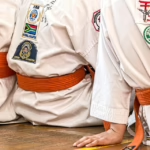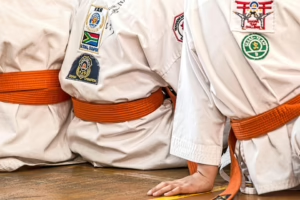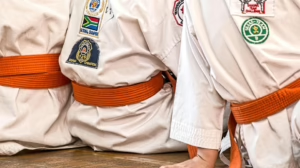From Cirque du Soleil to Local Studios: The Popularity of Acrobatic Arts Today
Introduction
The landscape of acrobatic arts has transformed dramatically over the last few decades. From its origins rooted in ancient theatrical traditions to contemporary gatherings of performers and the rapid rise of local studios, the world of acrobatics today is vibrant and diverse. At the pinnacle of this phenomenon is the renowned Cirque du Soleil, a catalyst for mainstream interest in acrobatics. This article explores the rise of acrobatic arts from Cirque du Soleil to local studios, discussing its historical context, modern popularity, and the impact it has had on various communities.
Historical Context
Ancient Origins
Acrobatic arts have a rich history that dates back to ancient civilizations. In ancient Egypt, acrobats performed physical feats at religious ceremonies, while similar acts were documented in ancient China and Greece. These performances were often tied to ceremonies or celebrations, showcasing strength, agility, and skill.
The Evolution of Performance
The Middle Ages saw acrobatics incorporated into minstrel shows and circus acts, but it wasn’t until the 18th and 19th centuries that acrobatics found a home in the burgeoning circus culture. The circus became a sacred space for acrobatic performance, showcasing daring individuals who executed extraordinary feats while captivating audiences.
The Birth of Cirque du Soleil
Founded in 1984, Cirque du Soleil revolutionized the world of circus performance by blending acrobatics with theater, music, and dance. This innovative approach not only elevated the visibility of acrobatics but also set a new standard for what circus arts could encompass.
The Influence of Cirque du Soleil
A New Era of Performance
Cirque du Soleil’s unique synthesis of storytelling, artistry, and acrobatic prowess captured the hearts of audiences worldwide. With theatrical narratives woven into performances, the company introduced acrobatics as a form of high art, elevating it beyond mere entertainment. This shift in perception has had lasting impacts on both performers and audiences.
Inspiring New Generations
As Cirque du Soleil became a cultural phenomenon, it inspired many aspiring acrobats to pursue their passions. Young individuals worldwide began training in acrobatics, often starting in local studios that offered classes in various disciplines including aerial silks, trapeze, and gymnastics. The allure of becoming part of a grand performance echoed through communities, bridging the gap between professional and amateur performers.
Global Outreach
Cirque du Soleil has also played a significant role in globalizing acrobatic arts. Through international tours and collaborations, they introduced diverse cultural elements into their performances, showcasing acrobatics from around the world. This exchange of ideas has fostered growth and innovation in the discipline, further inspiring local studios and performers to integrate various cultural influences into their own work.
The Popularity of Local Studios
Community Building
Local studios have become integral parts of their communities, fostering connections among individuals sharing a passion for acrobatics. These spaces provide a platform for people of all ages and backgrounds to come together, encouraging physical fitness and self-expression. In recent years, the growth of such studios has led individuals to participate in acrobatics not only as performers but also as a means of social engagement.
Accessible Training
With Cirque du Soleil as a guidepost, local studios have flourished, offering accessible training to those passionate about acrobatics. Classes of varying skill levels are now commonplace, allowing individuals to embark on their acrobatic journeys, whether they are beginners or seasoned athletes. This accessibility has helped demystify the art form and break down barriers, making acrobatics available to a broader audience.
Diverse Offerings
Local studios have diversified their offerings to include a variety of acrobatic disciplines. Classes in aerial arts, gymnastics, parkour, and dance-infused acrobatics attract individuals with different interests. This variety allows students to explore their unique strengths and find their niche within the acrobatic community.
The Cultural Impact of Acrobatic Arts
Fostering Creativity
The rise of acrobatics in local studios has contributed to an environment that fosters creativity. Students are encouraged to explore their physical capabilities, experiment with movement, and express themselves artistically. This has resulted in the emergence of new styles and performances, enriching the acrobatic arts landscape.
Health and Wellness
Participating in acrobatic training also brings about notable health benefits. Physical activities enhance strength, flexibility, and coordination, while also promoting mental well-being. Local studios often cultivate an atmosphere that emphasizes holistic health, encouraging students to maintain physical fitness as a form of self-care.
Economic Growth
The surge in popularity of acrobatic arts has contributed to economic growth in local communities. As studios proliferate, they create job opportunities for instructors, performers, and support staff. Additionally, performances and showcases provide avenues for generating income, supporting local artists and boosting local economies.
Conclusion
The journey of acrobatic arts, from its historical roots to the modern-day influence of Cirque du Soleil and local studios, highlights the transformative power of performance. Today, acrobatics continues to evolve, drawing in participants from all walks of life and fostering a sense of community, creativity, and artistry. As this dynamic art form continues to thrive, it not only captivates audiences but also engages individuals on a personal level, promoting physical fitness and overall well-being. With each local studio that opens its doors and each performance that captivates audiences, the popularity of acrobatic arts marches forward, keeping the spirit of this ancient form alive and vibrant.
References
- "The History of Circus: From Ancient Origins to Modern Day" (insert source)
- "Cirque du Soleil: A New Era in Entertainment" (insert source)
- "Community Building through Local Studios" (insert source)
- "Health Benefits of Acrobatics" (insert source)
- "Economic Impact of the Arts" (insert source)
This outline presents a comprehensive article on the popularity of acrobatic arts, incorporating perspectives from both Cirque du Soleil and local studios while discussing social, cultural, and economic impacts. If you would like me to expand on any section or include more specific information, feel free to let me know!


























Add Comment